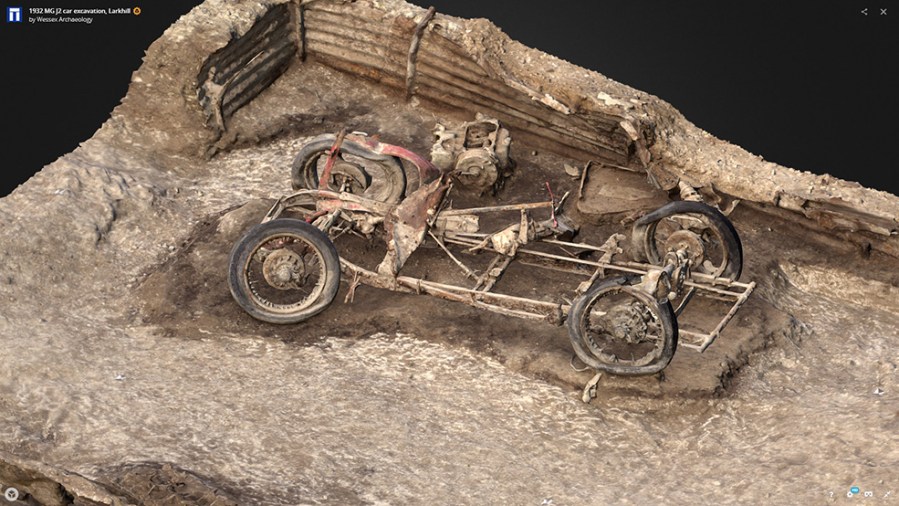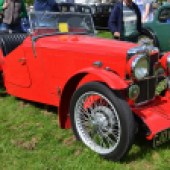A rare pre-war MG sports car was recently found by archaeologists in Salisbury Plain, Wiltshire.
Excavation teams from Wessex Archaeology travelled to the garrison town of Larkhill, once home to Britain’s first military aerodrome, to comb the surrounding area for artefacts ahead of an armed forces relocation initiative.
Known as the Army Basing Programme, teams began work on the area unaware of its archaeological significance. As Bronze Age and Iron Age trenches, burial sites and enclosure remains were uncovered, evidence of Larkhill’s military past became apparent; in a World War Two artillery position (weapons pit), site workers unearthed the remains of a 1932 MG J2. One of 2083 built, it was an expensive toy for those that could afford it.
Most of the bodywork was missing, although the chassis plate – carrying the serial number J2192 – was clearly visible. Work began on tracing the owner, as Damien Campbell-Bell from Wessex Archaeology recalled:
“We only know of one owner of the car with the serial number J2192: a Mr J. H. Howard of Retford, from July 1934, though it is likely that it had other owners.”
Found wearing post war tyres, Wessex Archaeology deduced that the J2 was last on the road in the ‘Sixties; closer examination of the chassis revealed that it had been modified to take a different unit – one which was lying next to the car.
Damien concluded: “The car had been dismantled, presumably for repair by a local soldier, but was then seemingly abandoned. Exactly why this happened we cannot be sure, but the introduction of the MoT test in 1960 was the end for many cars that had been kept going in this way. It may be that the introduction of the MoT also sentenced this MG J2 to the grave.”
Editor of MG Enthusiast, Simon Goldworthy, was excited about the discovery – and felt that there was more than a fighting chance of the J2 seeing the road again.
“I really hope that the publicity it generates pulls out some more background information to this particular car. Depending on which bits of the chassis are still there and salvageable, I don’t suppose we can rule out the possibility of it appearing back on the road in the future, however unlikely that may appear. After all, we have a J2 going into this next issue of MGE that was built by its talented owner virtually in its entirety from scratch,” he confirmed.
Simon also suggested why the J2 had its engine replaced – and why it might have been laid up in the first place. “The engine next to the car is probably a Ford sidevalve. Many people fitted this unit in the ‘Sixties when the fragile MG crankshaft broke.” Perhaps the owner was mid way through a conversion before being deployed?
“There was probably nothing particularly secretive about how it was abandoned”, added Simon. “We’ve got a feature with a TD owner in the current issue who was a career officer. When he finished training at Sandhurst, he said there were all sorts of cars just abandoned in the car park (the MoT had just come in) by the departing cadets and the army dug a big hole, bulldozed all the cars into it and eventually built a hospital on top. There were probably a lot of abandoned projects around the various army properties as people got posted elsewhere before completing them.”
After the site was fully charted, shots were taken of the J2 in situ to produce a three-dimensional rendering of the car. Anyone can view the MG’s remains online – but its fate remains unknown.








